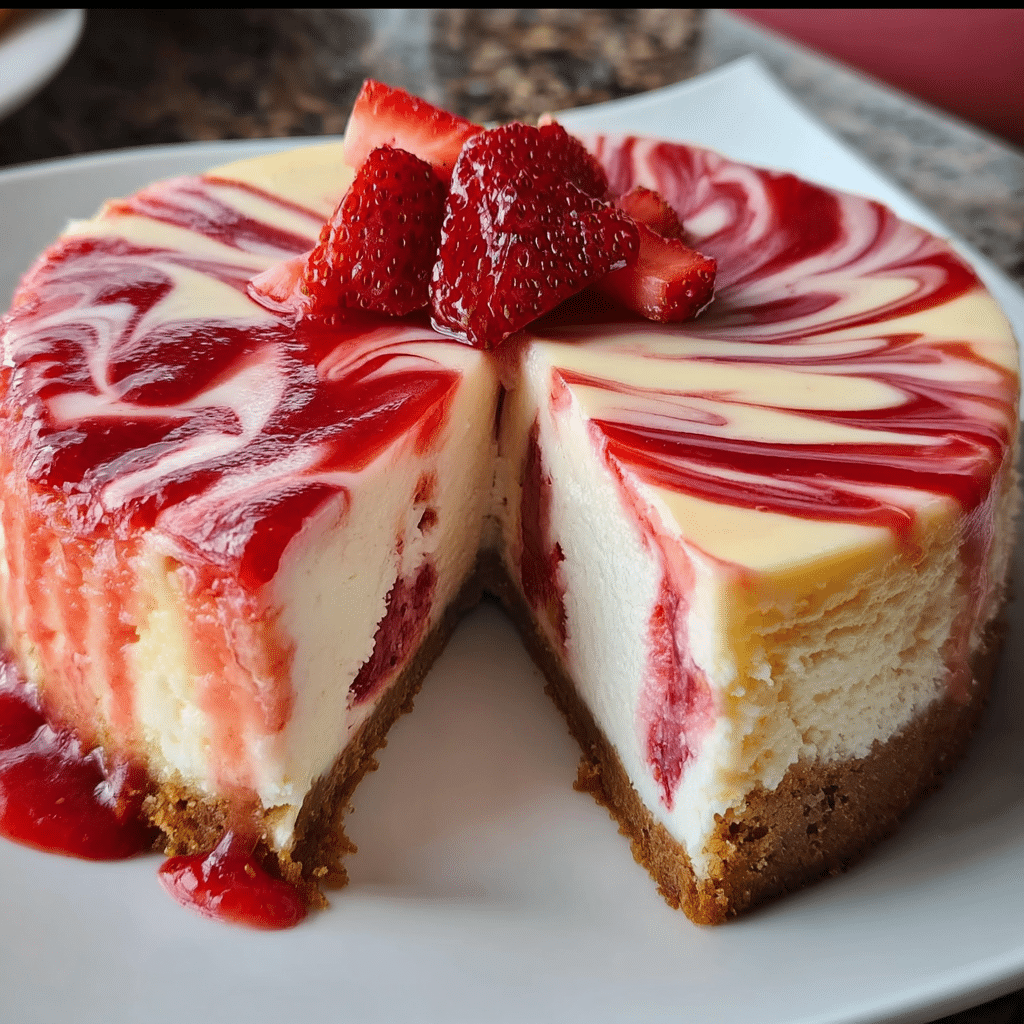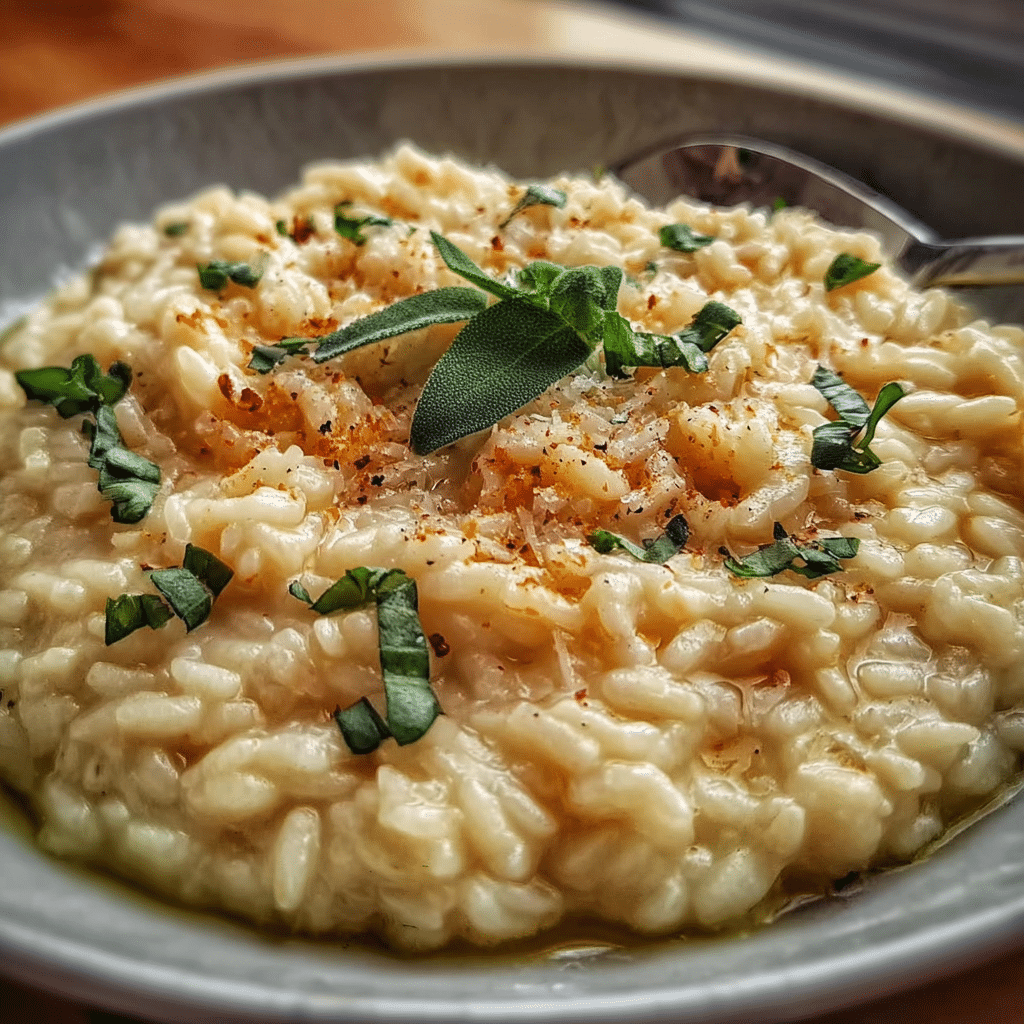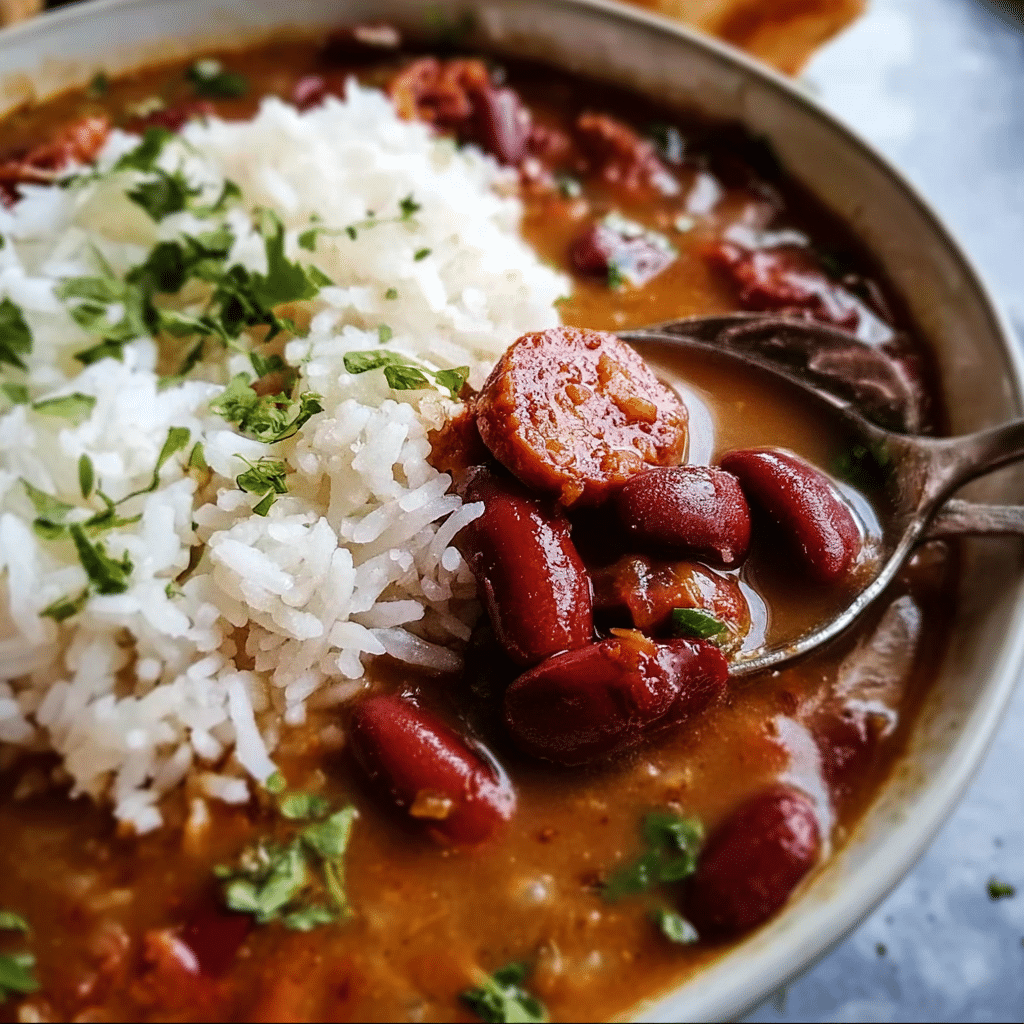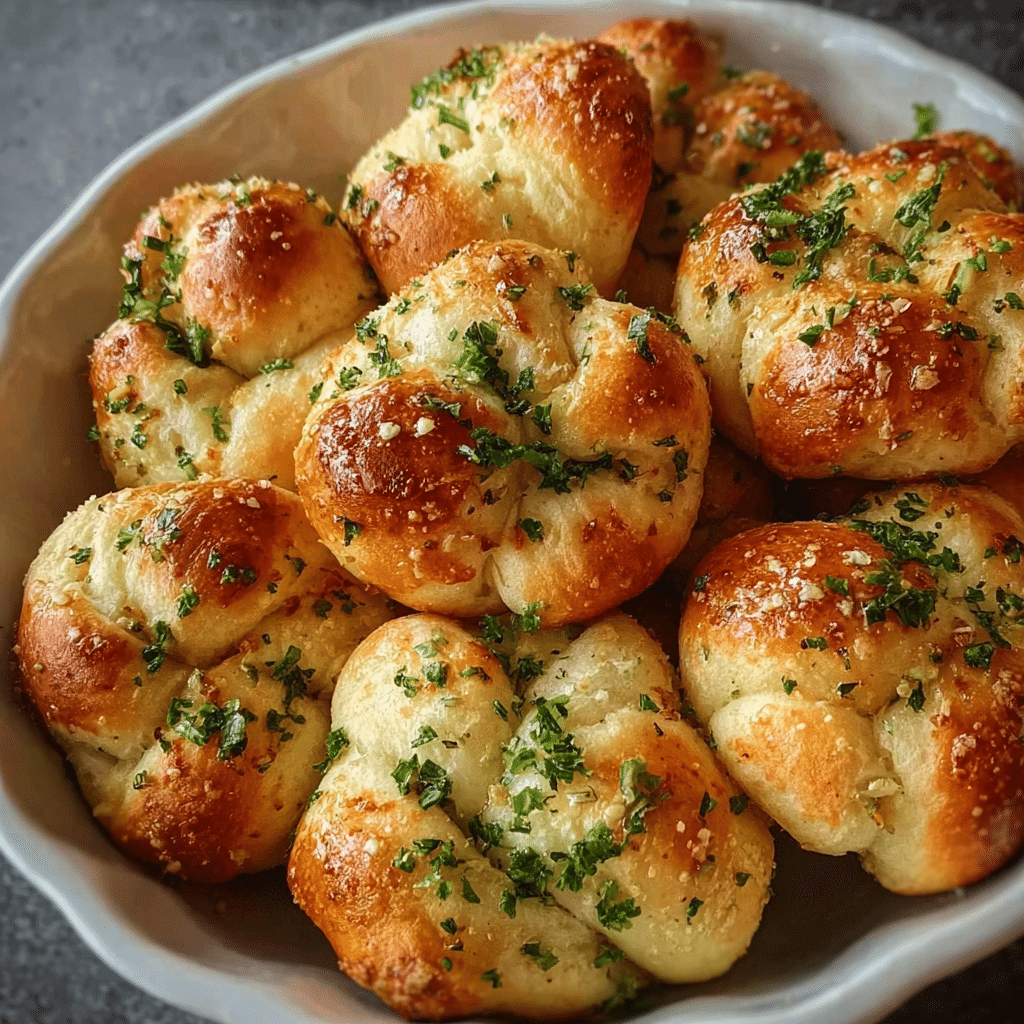Thanksgiving cheese ball has become a delightful staple in my family’s holiday celebrations, serving as both an appetizer and a conversation starter around the dinner table. I still remember the first time I encountered this delightful creation at a friend’s Thanksgiving gathering. As I walked into the living room, the cheesy aroma wafted through the air, beckoning me to the snack table where a beautifully crafted cheese ball was displayed, adorned with chopped nuts and herbs. It was love at first bite, and I knew I had to recreate it for my own family gatherings. Little did I know that this simple cheese ball would become a cherished tradition, a symbol of our shared love for food, and a way to connect with loved ones during the bustling holiday season.
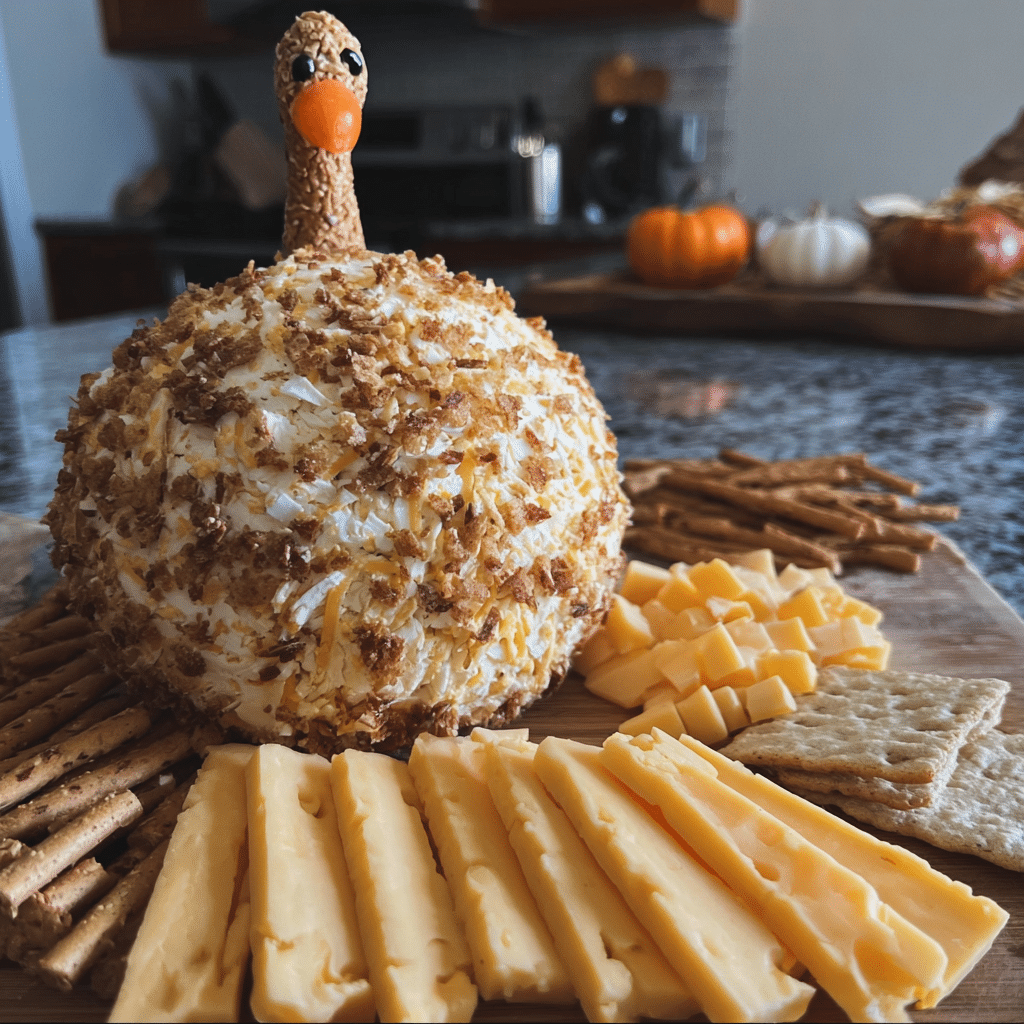
Over the years, I’ve experimented with countless variations of the Thanksgiving cheese ball, each one reflecting the unique flavors of the season. This dish is more than just a mixture of cheese and spices; it embodies the spirit of Thanksgiving, bringing everyone together over shared laughter and stories. The beauty of the Thanksgiving cheese ball lies in its versatility; you can customize it to suit your family’s tastes, whether you prefer a classic blend of cream cheese and herbs or a gourmet twist with cranberries and walnuts. It’s an appetizer that can be prepared ahead of time, making it a perfect choice for busy families looking for quick dinner solutions during the hectic holiday season.
The Story Behind This Recipe
As I began to delve deeper into the world of cheese balls, I discovered that they have been a favorite among American families for decades. Originating in the mid-20th century, cheese balls became popular as a no-fuss appetizer that could be prepared in advance and served at parties and gatherings. The Thanksgiving cheese ball, in particular, gained traction as a suitable dish for the fall season, often incorporating seasonal ingredients like cranberries, pecans, and spices that evoke the warm, cozy feelings associated with Thanksgiving.
What makes this recipe truly special is its ability to adapt to personal tastes and regional influences. From the classic cream cheese and cheddar base to more adventurous combinations featuring blue cheese or goat cheese, the Thanksgiving cheese ball can be tailored to reflect your culinary preferences. My personal favorite incorporates a hint of maple syrup and finely chopped herbs, lending a sweet and savory flavor that perfectly complements the richness of the cheese.
Why You’ll Love This Dish
The Thanksgiving cheese ball is not only a crowd-pleaser but also a practical choice for busy families. With its straightforward preparation, you can whip it up in under 30 minutes and allow it to chill in the refrigerator until it’s time to serve. This dish allows you to enjoy more time with your family and friends instead of being stuck in the kitchen. Imagine the joy of gathering around the table, dipping crackers into the cheese ball, and sharing stories about your day while savoring the delightful flavors.
Seasonal relevance is another reason to love the Thanksgiving cheese ball. As fall approaches, the air turns crisp, and the colors of the leaves shift to warm hues. It’s the perfect time to incorporate the flavors of the season into your meals. The cheese ball fits seamlessly into any Thanksgiving spread, offering a delightful contrast to heavier dishes like turkey and stuffing. I often find myself preparing it the day before our Thanksgiving feast, allowing the flavors to meld overnight, making it even more delicious by the time we’re ready to dig in.
Emotionally, this dish holds a special place in my heart. It represents the warmth of home, the joy of hospitality, and the importance of sharing good food with loved ones. Each bite brings back memories of laughter-filled gatherings and the sound of clinking glasses as we toast to gratitude and togetherness. As you embark on your journey to create your own Thanksgiving cheese ball, I promise you will not only learn how to make this delightful dish but also discover the joy it brings to your holiday celebrations.
The Rich History and Cultural Significance of thanksgiving cheese ball
The Thanksgiving cheese ball is not merely a trendy appetizer; it has a rich history and cultural significance that spans decades. The origins of cheese balls can be traced back to the United States in the 1940s and 1950s, a time when entertaining at home became increasingly popular. This era saw the rise of convenience foods, and the cheese ball emerged as an easy yet impressive dish for hosts to serve at gatherings. The combination of cream cheese and various flavorings quickly became a canvas for creativity, allowing home cooks to play with ingredients while still keeping preparation simple.
Origins and History
Initially, cheese balls were simple mixtures of cream cheese and shredded cheese, often rolled in chopped nuts or herbs. However, as the decades progressed, the Thanksgiving cheese ball evolved, incorporating seasonal ingredients that reflect the flavors of Thanksgiving. The addition of cranberries, for instance, not only enhances the dish’s flavor but also adds a beautiful pop of color, making it visually appealing. This evolution continued into the 21st century, where cheese balls have found their way into gourmet kitchens, with chefs experimenting with exotic cheeses and flavor combinations.
Regional variations have also contributed to the cheese ball’s legacy. In some parts of the country, cheese balls are made with sharp cheddar and spicy ingredients, while others prefer a sweeter profile featuring fruits and nuts. For instance, in the Southern United States, the cheese ball is often paired with hot pepper jelly, creating a delightful contrast that excites the palate. Such variations not only speak to the versatility of the dish but also highlight the cultural influences present in American cuisine.
Cultural Significance
The Thanksgiving cheese ball holds a special place during various festive occasions, particularly Thanksgiving. It serves as an appetizer that brings people together, igniting conversations and laughter before the main meal. This dish is often seen at family gatherings, holiday parties, and potlucks, where it acts as a bridge that connects people through shared culinary experiences. In many households, the Thanksgiving cheese ball is a tradition that is passed down through generations, each family adding their unique touch to the recipe.
Additionally, the cheese ball has made its way into popular culture, frequently appearing in cookbooks, food blogs, and cooking shows. Chefs and home cooks alike have embraced the cheese ball, showcasing their creativity and culinary prowess. Notable culinary figures have also played a role in popularizing this dish; for instance, the renowned chef Ina Garten has included her versions of cheese balls in her cookbooks, inspiring many to create their own variations at home.
Nutritional Benefits
When it comes to nutrition, the Thanksgiving cheese ball can be a guilt-free indulgence if prepared thoughtfully. The primary ingredient, cream cheese, provides a source of calcium and protein, making it a satisfying option for an appetizer. By incorporating ingredients like nuts and herbs, you can enhance the nutritional profile further. Nuts add healthy fats, fiber, and a range of vitamins, while herbs contribute antioxidants and anti-inflammatory properties.
Moreover, you can make adjustments to the recipe to cater to health-conscious individuals. Using low-fat cream cheese or Greek yogurt can reduce calories without sacrificing flavor. Additionally, incorporating more vegetables into the mix can boost the fiber content, making it a more balanced option. The Thanksgiving cheese ball, therefore, is not only a delicious addition to your holiday menu but can also be a smart choice for those looking to maintain a balanced diet during the festive season.
In conclusion, the Thanksgiving cheese ball is a dish steeped in history and cultural significance, evolving over time to meet the tastes and preferences of generations. With its ability to adapt to regional flavors and personal preferences, it has cemented its place in holiday traditions across the country. As you prepare this delightful dish, you’re not just making an appetizer; you’re creating a connection to the past, celebrating the present, and making memories for the future.
Essential Ingredients for Perfect thanksgiving cheese ball
When it comes to hosting a Thanksgiving gathering, the star of the appetizer table often turns out to be none other than the thanksgiving cheese ball. This delightful creation not only serves as a crowd-pleaser but also allows for creativity and personalization. To ensure that your cheese ball is a hit, let’s dive into the essential ingredients that will make your dish shine.
Essential Ingredients
Here’s a complete list of the ingredients you will need to create the perfect thanksgiving cheese ball:
- 8 oz cream cheese, softened
- 1 cup shredded cheddar cheese
- 1/2 cup crumbled blue cheese or feta
- 1/4 cup finely chopped green onions
- 1/4 cup chopped pecans or walnuts
- 1 teaspoon garlic powder
- 1 teaspoon onion powder
- 1 teaspoon Worcestershire sauce
- Salt and pepper to taste
- Fresh herbs (e.g., parsley or chives) for garnish
- Assorted crackers and vegetables for serving
Each of these ingredients plays a crucial role in the flavor and texture of your thanksgiving cheese ball. The cream cheese serves as the base, providing a creamy texture that binds all the flavors together. The cheddar cheese adds a sharp, tangy flavor, while the blue cheese or feta contributes a more robust, savory note. Green onions bring freshness and a slight crunch, and the nuts provide a delightful contrast in texture and a nutty taste.
Print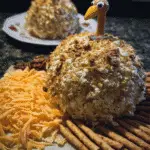
Thanksgiving Cheese Ball Recipe
Ingredients
- 16 ounces cream cheese , softened
- 2 cups freshly grated sharp cheddar cheese (avoid pre-shredded cheese)
- 2 green onions , chopped
- 1 teaspoon Worcestershire sauce
- 1 teaspoon hot pepper sauce
- 1 teaspoon dried parsley flakes
- 1/2 teaspoon garlic powder
- 1/2 teaspoon Dried oregano
- dash freshly ground black pepper
- 2/3 cup pecans , finely chopped
Instructions
- Place cream cheese in a mixing bowl then mix until smooth. Add cheese, green onion, Worcestershire sauce, hot sauce, parsley, garlic powder, oregano. and pepper then mix well to combine.
- Use a rubber spatula to scrape the sides of the bowl and gather the mixture into one lump. Lightly grease your hands and form the mixture into a round ball.
- Place the pecans on a plate. Hold the cheese ball in one hand and use the other hand to scoop the pecans onto the outside of the ball, pressing them in gently and turning the ball to coat all sides.
- Cover the cheeseball in cling wrap and refrigerate for about 1 hour to allow it to firm up. Take it out of the refrigerator about 20 minutes before serving to allow it to soften just slightly. Serve with crackers, pretzels, vegetables or anything else you’d love to dip in cheese!
Shopping Tips
When shopping for ingredients, quality is key. Here are some pointers to ensure you select the best items for your thanksgiving cheese ball:
- Cheese: Choose high-quality, fresh cheese. For cream cheese, look for brands that use natural ingredients without preservatives. For the cheddar, consider artisanal varieties for a richer flavor.
- Nuts: If you’re opting for pecans or walnuts, buy them whole and chop them yourself to ensure freshness. Check for a crisp texture and a pleasant aroma, which signify good quality.
- Fresh Herbs: When selecting herbs, look for vibrant green leaves without any wilting or browning. Fresh herbs elevate the flavor and presentation of your thanksgiving cheese ball.
Additionally, think about seasonal availability. Many ingredients, such as fresh herbs and nuts, are readily available in the fall. Local farmers’ markets can be a treasure trove for fresh, organic options at competitive prices. Not only does this support local agriculture, but it also often results in better quality produce.
Substitutions and Alternatives
If you’re accommodating dietary restrictions or simply want to try something new, here are some substitution options for your thanksgiving cheese ball:
- Vegan Version: Substitute cream cheese with a vegan alternative made from cashews or tofu. Use nutritional yeast in place of cheddar cheese for a cheesy flavor without dairy.
- Nuts-Free Option: If nuts are a concern, you can either omit them entirely or replace them with crispy rice cereal for added crunch.
- Cheese Alternatives: For a milder flavor, consider using goat cheese instead of blue cheese, or a smoked cheese for a unique twist.
Storage tips are also vital for your ingredients. Cream cheese should be stored in the refrigerator and consumed by its expiration date. Shredded cheeses can last longer if kept in an airtight container. Nuts should be stored in a cool, dry place, and can even be kept in the freezer for extended freshness. Fresh herbs can be wrapped in a damp paper towel and placed in a plastic bag in the fridge to prolong their life.
Lastly, let’s talk cost-saving tips. Buying in bulk can reduce costs, especially for nuts and cheese. If you’re making multiple cheese balls or other cheese-based dishes, it might be worth investing in larger quantities. Additionally, consider using store brands for ingredients like cream cheese and shredded cheese; they often offer comparable quality at a lower price.
When it comes to organic versus conventional considerations, it often depends on personal preference and budget. Organic cheese and nuts can be pricier but may offer peace of mind regarding pesticides and other chemicals. If your budget allows, choosing organic for the ingredients that you consume most frequently can be a worthwhile investment.
With all these tips in mind, you’re now well-equipped to gather the essential ingredients for your thanksgiving cheese ball. Let’s move on to the next step, where we’ll explore the detailed cooking instructions that will bring your creation to life!
Detailed Step-by-Step thanksgiving cheese ball Cooking Instructions
Creating a thanksgiving cheese ball is not only a fun cooking project but also a fantastic way to engage your guests and get them excited about the meal ahead. The process is straightforward, but attention to detail can make a significant difference in the final product. Here’s a step-by-step guide to crafting your cheese ball masterpiece.
Preparation Steps
- Gather Your Ingredients: Start by assembling all your ingredients. Lay everything out on a clean surface, so you have easy access to what you need. This is called mise en place, and it’s a vital step that helps ensure a smooth cooking process.
- Soften the Cream Cheese: If you haven’t already, let the cream cheese sit out for about 30 minutes to soften. This makes it easier to blend with the other ingredients, resulting in a smoother texture.
- Chop the Green Onions: Finely chop the green onions, making sure to use both the green and white parts. The green parts add color and a fresh flavor, while the white parts provide a bit of bite.
- Prepare the Nuts: If you’re using whole nuts, chop them coarsely. This will ensure they are evenly distributed throughout the cheese ball and provide a pleasant crunch. If you prefer a finer texture, you can pulse them in a food processor.
- Measure Your Ingredients: Measure out the shredded cheddar cheese, blue cheese or feta, garlic powder, onion powder, Worcestershire sauce, and any other ingredients. Having everything pre-measured will make the mixing process much easier.
Cooking Process
- Mix the Base: In a large mixing bowl, combine the softened cream cheese with the shredded cheddar cheese. Using a hand mixer or a spatula, blend until the mixture is smooth and well combined. This step is crucial as it sets the foundation for your thanksgiving cheese ball.
- Add Flavorings: Once the base is smooth, incorporate the crumbled blue cheese (or feta), chopped green onions, and garlic and onion powders. Mix until evenly distributed. You should be able to see flecks of green onions and blue cheese throughout the mixture.
- Season to Taste: Add Worcestershire sauce, salt, and pepper. Taste the mixture and adjust the seasoning as needed. If you like a little heat, consider adding a pinch of cayenne pepper or a few dashes of hot sauce.
- Form the Cheese Ball: Once everything is mixed well, use your hands to gather the mixture and shape it into a ball. Don’t worry about it being perfect; a rustic look adds charm!
Final Assembly
- Coat the Cheese Ball: On a large plate, spread your chopped nuts evenly. Roll the cheese ball in the nuts until it is fully coated. This not only adds flavor but also creates a beautiful presentation.
- Chill: Wrap the cheese ball in plastic wrap and refrigerate for at least one hour, or overnight if possible. Chilling allows the flavors to meld and helps the cheese ball firm up for easier slicing and serving.
- Garnish: Just before serving, remove the cheese ball from the refrigerator and garnish with fresh herbs. A sprinkle of parsley or chives adds a lovely touch of color and freshness.
- Serve with Accompaniments: Arrange an assortment of crackers, sliced vegetables, and maybe even some fruit on a platter next to the cheese ball. This variety not only enhances the presentation but also offers guests multiple ways to enjoy the dish.
In total, preparing the thanksgiving cheese ball takes about 30 minutes, plus chill time. While it may seem simple, the layering of flavors and textures is what truly makes this dish special. Some common mistakes to avoid include not letting the cream cheese soften enough, which can lead to a lumpy texture, or forgetting to taste and adjust seasonings before forming the ball.
As you prepare your cheese ball, remember that this process is about enjoying the experience. Feel free to put your personal spin on the recipe by adding your favorite spices or ingredients. Maybe a hint of rosemary or a dash of smoked paprika? Cooking is as much about experimenting as it is about following recipes. So, get creative, and enjoy the process!
With these detailed instructions, you’re now ready to impress your friends and family at your Thanksgiving gathering with a delicious and beautifully presented thanksgiving cheese ball. Happy cooking!
Professional Tips and Techniques for thanksgiving cheese ball
When it comes to crafting the perfect thanksgiving cheese ball, there’s an art to it that goes beyond just mixing cheese with a few spices. It’s a delightful combination of flavors and textures that can elevate your holiday spread to new heights. In this section, we’ll explore professional tips and techniques, troubleshooting common problems, and even some presentation ideas that will make your cheese ball the star of the show.
Professional Techniques
Creating an exceptional thanksgiving cheese ball starts with the right ingredients and techniques. First, consider the cheese selection. While cream cheese is a staple, blending it with other cheeses like sharp cheddar, blue cheese, or goat cheese can add depth of flavor. Always let your cream cheese sit out at room temperature for at least 30 minutes before mixing; this ensures it blends smoothly with other ingredients.
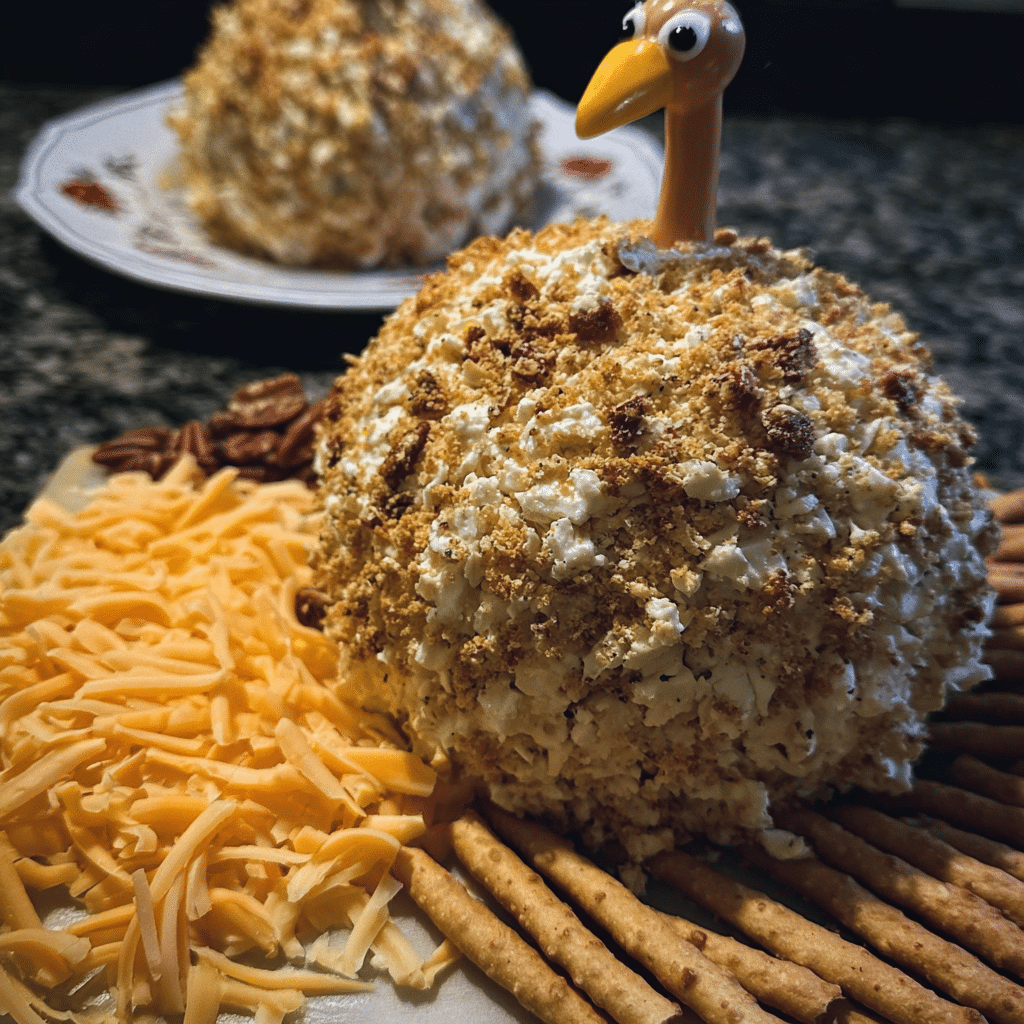
When mixing your cheeses, use a hand mixer or stand mixer for the best results. This helps to aerate the mixture, giving your cheese ball a fluffy texture. For a more rustic approach, you can opt for a fork or even your hands, but be prepared for a bit of a workout!
Don’t skimp on flavorings. Fresh herbs like chives, dill, or parsley can brighten up your cheese ball immensely. If you want to add a little kick, consider incorporating spices such as smoked paprika, garlic powder, or even a dash of cayenne pepper. The key is to taste as you go; this is the best way to ensure your thanksgiving cheese ball is balanced and flavorful.
Troubleshooting Guide
No one wants to face a cheese ball disaster at their Thanksgiving gathering. Here are some common pitfalls and how to avoid them:
- Too Soft: If your cheese ball is too soft to hold its shape, it may be due to overmixing or using too much cream cheese. To salvage it, add a little more shredded cheese or even some crushed nuts to firm it up.
- Too Dry: On the other hand, if your mixture feels dry and crumbly, try adding a splash of milk, sour cream, or some flavorful mayonnaise. This can help bind everything together.
- Flavorless: If the taste isn’t as robust as you’d like, don’t hesitate to add more herbs, spices, or even a splash of hot sauce. Remember, the flavor builds as it chills, so consider letting it rest for at least a couple of hours in the fridge.
Presentation Tips
Presentation is crucial when it comes to your thanksgiving cheese ball. After all, you want your guests to be tempted by its beauty! Consider rolling your cheese ball in finely chopped nuts, dried cranberries, or herbs for a colorful exterior that also adds texture. A sprinkle of paprika or a drizzle of honey can create a stunning visual contrast.
For serving, place your cheese ball on a beautiful wooden or slate platter. Surround it with an assortment of crackers, fresh veggies, and even some seasonal fruit like apple slices or grapes. Not only does this create an eye-catching display, but it also encourages guests to mix and match flavors.
Wine and beverage pairings can also elevate your cheese ball experience. A light-bodied red wine, such as Pinot Noir, complements the creamy texture beautifully, while a sparkling wine can cleanse the palate between bites. For non-alcoholic options, consider a spiced apple cider or a refreshing herbal tea.
In terms of meal prep, the thanksgiving cheese ball can be made a day or two in advance. This not only saves you time on the big day but also allows the flavors to meld together beautifully. Just wrap it tightly in plastic wrap and store it in the refrigerator; it’s one less thing to worry about when you’re bustling around the kitchen preparing your Thanksgiving feast.
Lastly, if you find yourself needing to scale the recipe, it’s quite simple! Doubling or halving the ingredients can easily adjust the size of your cheese ball without compromising the flavor. Just remember to maintain the balance of cheeses and seasonings, and you’ll be golden.
With these tips in mind, you’re well on your way to mastering the art of the thanksgiving cheese ball. Whether it’s your first time making one or you’re a seasoned pro, these insights will help ensure your creation is a hit at your Thanksgiving gathering.
Creative Variations and Adaptations of thanksgiving cheese ball
The beauty of the thanksgiving cheese ball lies in its versatility. It’s a blank canvas that can be adorned with a myriad of flavors and textures, allowing you to get creative and adapt it to your taste preferences or dietary needs. This section will delve into various creative variations and adaptations that can help you impress your guests.
Seasonal Variations
Seasonal ingredients can significantly enhance your thanksgiving cheese ball. For example, during fall, consider incorporating roasted butternut squash or pumpkin puree into your cheese mixture. This not only adds a lovely flavor but also gives your cheese ball a vibrant orange hue that speaks to the season. Mixing in some candied pecans or walnuts can offer a delightful crunch and a touch of sweetness.
Another seasonal twist is to fold in dried cranberries or figs, which provide a beautiful contrast to the rich flavors of the cheese. A sprinkle of cinnamon or nutmeg can also evoke the warm spices associated with Thanksgiving, making your cheese ball feel even more festive.
Dietary Adaptations
With the growing awareness of dietary restrictions, it’s essential to have options that cater to various needs. For a keto-friendly thanksgiving cheese ball, focus on using full-fat cream cheese, and incorporate nuts, seeds, or even bacon bits for flavor and crunch. Avoid any high-carb additives like crackers; instead, serve with celery sticks or cucumber slices.
If you’re looking for a vegan adaptation, substitute the cream cheese with a nut-based cheese or a store-bought vegan cream cheese. You can also blend soaked cashews with nutritional yeast, lemon juice, and your choice of herbs for a creamy, flavorful alternative. Don’t forget to jazz it up with your favorite spices to achieve that signature cheese ball taste.
Creative Twists
For those who love to experiment, consider international fusion variations of the thanksgiving cheese ball. For instance, how about a Mediterranean-inspired cheese ball with feta cheese, sun-dried tomatoes, olives, and fresh oregano? This variation can transport your guests’ taste buds straight to the Mediterranean coast.
If you’re up for a spicy kick, a Mexican-inspired cheese ball made with cream cheese, cheddar, jalapeños, and cilantro can offer a zesty alternative. Serve it with tortilla chips and guacamole for an unforgettable twist on your traditional cheese ball.
Another fun idea is to use different cooking methods. While the classic cheese ball is served cold, you can also bake it for a warm, gooey treat. Just mix your ingredients, shape them into a ball, and bake it until golden and bubbly. Serve it with warm bread or crackers for a cozy, comforting appetizer.
Leftover transformations are another creative outlet. If you have any leftover thanksgiving cheese ball, consider crumbling it over a salad for added flavor or mixing it into a pasta dish. The creamy cheese can elevate a simple dish into something extraordinary!
In conclusion, the variations of the thanksgiving cheese ball are as endless as your imagination. Whether you’re sticking to traditional flavors or exploring new culinary territories, the cheese ball can easily adapt to suit any palate or dietary need. So, roll up your sleeves and get ready to impress your guests with a cheese ball that’s uniquely yours this Thanksgiving!
Storage, Reheating, and Meal Prep for thanksgiving cheese ball
When it comes to entertaining during the Thanksgiving season, the thanksgiving cheese ball is a delightful centerpiece that brings a smile to everyone’s face. But what happens once the festivities have ended? Proper storage, reheating, and meal prep strategies can help you enjoy your cheese ball long after the last guest has left. Let’s dive into the best practices to ensure your cheese ball remains fresh and delicious.
Short-term Storage
After your Thanksgiving feast, you’ll likely have some leftovers, including your beloved thanksgiving cheese ball. The key to short-term storage is to keep it in the refrigerator to maintain its flavor and texture. First, make sure the cheese ball is wrapped tightly. You can use plastic wrap or aluminum foil to cover it completely. Additionally, placing it in an airtight container will provide an extra layer of protection against moisture and odors from other foods.
When storing your cheese ball, aim to consume it within 3 to 5 days for the best quality. This timeframe can vary based on the ingredients used. For instance, if your cheese ball contains fresh herbs or vegetables, it may have a shorter shelf life due to their perishability. However, ingredients like cream cheese and shredded cheese can help extend the shelf life slightly.
To enjoy it at its best, take the cheese ball out of the refrigerator about 30 minutes before serving. This allows it to soften slightly, making it easier to spread or scoop. Trust me, the difference in flavor and texture is worth the wait!
Freezing and Long-term Storage
If you find yourself with a large quantity of leftover thanksgiving cheese ball, freezing is a great option for long-term storage. Freezing preserves the flavors and can extend the life of your cheese ball for up to 2 to 3 months. To freeze, first wrap it tightly in plastic wrap to prevent freezer burn. Then, place it in a freezer-safe bag or container. Be sure to label it with the date, so you know when to use it by.
When you’re ready to enjoy your frozen cheese ball, transfer it to the refrigerator to thaw overnight. Avoid thawing it at room temperature, as this can lead to a change in texture. Once thawed, give it a gentle stir if the texture seems a bit off. You might notice a slight change in consistency, but it should still taste delicious!
If you’re thinking of making multiple cheese balls ahead of Thanksgiving, consider portioning them out into smaller sizes before freezing. This way, you can thaw only what you need for your holiday gatherings. Just remember, once you thaw a cheese ball, it should be consumed within 3 to 5 days if kept in the refrigerator.
Reheating Best Practices
While the thanksgiving cheese ball is typically served cold, if you’re looking to change things up, reheating is an option you might consider. To gently reheat your cheese ball, place it in an oven-safe dish and cover it with foil. Preheat your oven to 350°F (175°C) and warm it for about 10-15 minutes, or until it reaches your desired temperature. This method helps maintain the creamy texture while ensuring it doesn’t dry out.
Another method of reheating involves using a microwave. However, this can be tricky, as microwaving can quickly change the texture of the cheese ball. If you choose to use this method, set your microwave to a low power setting and heat it in 15-second intervals, checking frequently to ensure it doesn’t become too hot.
For meal prep enthusiasts, the thanksgiving cheese ball is a fantastic option. Preparing it in advance not only saves time on the day of your gathering but also allows the flavors to meld beautifully. You can mix and shape the cheese ball days ahead of time, storing it in the refrigerator or freezer until you’re ready to serve. Consider creating a couple of different flavor profiles, such as a savory herb cheese ball or a sweet cranberry variation, to cater to various tastes.
When it comes to food safety, always remember to follow proper guidelines. Keep the cheese ball in the refrigerator or freezer until you’re ready to serve it, and avoid letting it sit out at room temperature for more than two hours. This will help prevent any foodborne illnesses, ensuring that your Thanksgiving celebration remains a joyful occasion.
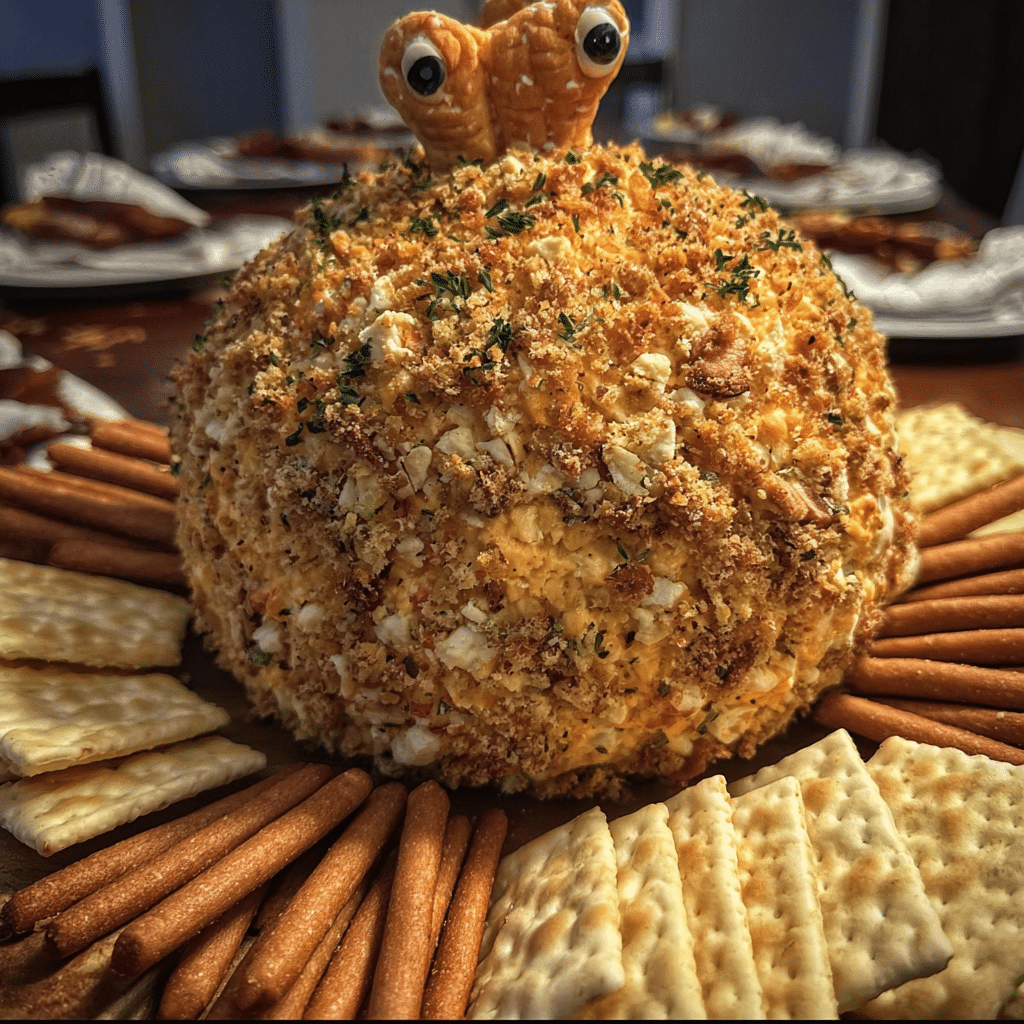
In conclusion, knowing how to properly store, reheat, and meal prep your thanksgiving cheese ball is essential for enjoying this festive treat long after the holiday has passed. With the right techniques, you can savor every bite, ensuring that your Thanksgiving memories — and your cheese ball — last well into the season.
Nutritional Benefits and Health Information
The thanksgiving cheese ball is not only a delightful appetizer but can also be surprisingly nutritious, depending on the ingredients you choose. As we dive into the nutritional benefits of this festive dish, we’ll explore the key ingredients that make it a delicious and satisfying option for Thanksgiving gatherings and beyond.
Nutritional Profile
At its core, a traditional cheese ball is primarily made of cream cheese and shredded cheese, but it can also include a multitude of ingredients like nuts, herbs, and spices. A standard serving of a cheese ball (about 2 tablespoons) typically contains approximately 100-150 calories, depending on its composition. The macronutrient breakdown often includes:
- Fat: 9-12 grams (mostly from the cheese and any added nuts)
- Carbohydrates: 1-2 grams (minimal, mostly from flavorings)
- Protein: 4-6 grams (from the cheese)
This balance of fats and proteins makes the cheese ball a filling appetizer that can help curb hunger before the main meal. However, it’s essential to be mindful of portion sizes, as the calories can add up quickly if you’re indulging in multiple servings.
Health Benefits
Cheese, the main ingredient in a thanksgiving cheese ball, is a good source of calcium and protein, both of which are essential for maintaining strong bones and supporting muscle health. Additionally, the presence of nuts (if used) can add healthy fats, fiber, and a variety of vitamins and minerals. For instance, walnuts, often used in cheese balls, are rich in omega-3 fatty acids, which can promote heart health.
Moreover, if your cheese ball includes ingredients like fresh herbs or spices, you’ll gain added antioxidant benefits. Ingredients such as parsley, chives, and garlic not only enhance flavor but also contribute to a more nutrient-dense appetizer.
Dietary Considerations
As with any dish, there are dietary considerations to keep in mind when preparing your thanksgiving cheese ball. For those who are lactose intolerant, substituting regular cream cheese with lactose-free options can make this dish accessible to a broader audience. Additionally, if you’re catering to a vegan crowd, consider using nut-based cheese alternatives or a combination of cashews and nutritional yeast to create a cheese-like flavor.
It’s also essential to consider allergen information. Cheese balls can contain common allergens such as dairy and nuts. When preparing for a gathering, it’s always wise to ask guests about their dietary restrictions or allergies ahead of time to ensure everyone can enjoy the dish safely.
In terms of how the thanksgiving cheese ball fits into various diet plans, it can be adapted to suit different lifestyles. For those following a low-carb or ketogenic diet, you can reduce the carb content by avoiding crackers and opting for fresh vegetables for dipping. On the other hand, for people following a Mediterranean diet, incorporating olive oil, herbs, and a variety of nuts can enhance the dish’s profile while keeping it aligned with their dietary preferences.
When comparing the cheese ball to similar dishes, such as pimento cheese or traditional spinach dip, the cheese ball often contains fewer calories and can be made with healthier ingredients, such as Greek yogurt instead of sour cream. This versatility allows you to enjoy a delicious appetizer without compromising on health.
For those looking to make the thanksgiving cheese ball even healthier, consider experimenting with herbs and spices to boost flavor without adding calories. You can also reduce the amount of cheese used and substitute in more vegetables or nuts, creating a lighter version of the classic dish.
In conclusion, the nutritional benefits and health information surrounding the thanksgiving cheese ball reveal that this festive treat can be both delicious and nourishing. By being mindful of your ingredient choices and preparation methods, you can create a cheese ball that not only pleases the palate but also aligns with various dietary needs, making it a staple on your Thanksgiving table.
Frequently Asked Questions About Thanksgiving Cheese Ball
Thanksgiving cheese ball pioneer woman
The Pioneer Woman, Ree Drummond, is known for her delicious and approachable recipes, including her Thanksgiving cheese ball. To make a cheese ball inspired by her style, start with a base of cream cheese and blend in shredded cheese, such as sharp cheddar, for added flavor. Incorporate herbs like chives or parsley, and mix in some finely chopped nuts for texture. To elevate the dish, consider wrapping the cheese ball in prosciutto or rolling it in crushed crackers before serving. This not only enhances the presentation but also offers a savory contrast to the creamy cheese.
Thanksgiving cheese ball recipes
Thanksgiving cheese balls can be a festive addition to your holiday spread, and there are countless recipes to explore. A classic cheese ball typically includes softened cream cheese, shredded cheese, and a variety of seasonings or add-ins like garlic powder, Worcestershire sauce, or cranberries for a holiday twist. For a sweet and savory version, consider adding dried fruit, such as apricots or raisins, along with some chopped nuts to create a delightful texture. Don’t forget to roll your cheese ball in herbs or spices for an eye-catching finish, and serve it with an assortment of crackers, fruits, or veggies for dipping. Experiment with flavors like pumpkin spice or maple to truly capture the essence of Thanksgiving.
Cheese ball recipe
A simple and delicious cheese ball recipe starts with an 8-ounce package of softened cream cheese as the base. To this, add 1 cup of shredded cheese, such as cheddar or mozzarella, and mix in your choice of seasonings like garlic powder, onion powder, and spices to taste. For added flavor and texture, fold in chopped herbs, bacon bits, or even jalapeños for a kick. Form the mixture into a ball and refrigerate for at least an hour to firm it up, making it easier to handle. When ready to serve, roll the cheese ball in crushed nuts or fresh herbs for an appealing presentation, and accompany it with crackers or vegetable sticks for a delightful appetizer.
Conclusion: Mastering the Perfect thanksgiving cheese ball
Creating the perfect thanksgiving cheese ball is more than just following a recipe—it’s about understanding the techniques, ingredients, and cultural significance behind this beloved dish. Throughout this comprehensive guide, we’ve explored everything from the historical origins to modern variations, ensuring you have all the knowledge needed to make this recipe your own.
Whether you’re a beginner cook or an experienced chef, the techniques and tips we’ve shared will help you create a thanksgiving cheese ball that’s not only delicious but also meaningful. Remember that cooking is a journey of discovery, and each time you make this dish, you’ll learn something new.
We encourage you to experiment with the variations we’ve discussed, adapt the recipe to your dietary needs, and most importantly, share it with the people you love. Food has the incredible power to bring people together, and Thanksgiving Cheese Ball is the perfect dish to create lasting memories around your dinner table.

